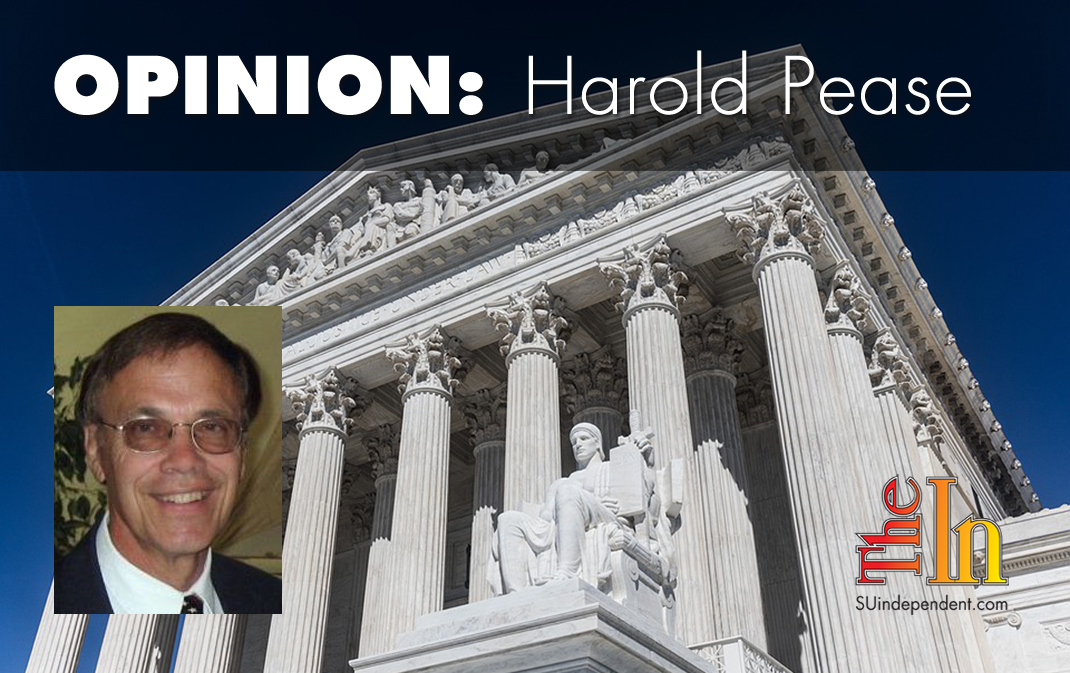
Constitution lists no qualifications for Supreme Court justices
Are you qualified to be the next Supreme Court justice? Perhaps. The only statement in the Constitution with respect to the existence of the Supreme Court lists no qualifications. It reads, “The judicial Power of the United States, shall be vested in one supreme Court, and in such inferior Courts as the Congress may from time to time ordain and establish. The Judges, both of the supreme and inferior Courts, shall hold their Offices during good Behaviour, and shall at stated Times, receive for their Services, a Compensation, which shall not be diminished during their Continuance in Office.”
Technically, anyone can be a justice, and that might be the point. If you suddenly found yourself newly appointed with a case pending next month, what would you first read outside the case summary? Not voluminous law books. Probably the Constitution as written without deviation from it! Today, law schools are filled with courses that read what the Constitution has become — case law — but not necessarily the document. Over time, the two may even be at variance with each other.
To stay with original intent, perhaps we would be better served with a historian who knows the history of why parts were placed in the Constitution and who reads the actual writings of the Founding Fathers — most notably the Federalist Papers and the minutes of the Constitutional Convention — and understands that this group of statesmen were the most unusual of any previously assembled.
Nor do law schools place a high enough priority on human nature or natural law (law that does not change) as does the Constitution, and as do philosophers. So perhaps a philosopher might be a better selection. Common sense is often close to natural law, and no profession has to be more in harmony with “nature’s law” to survive than a farmer; so perhaps a farmer.
Legal precedent is good, but if a decision with little or no constitutional basis is not immediately challenged, it has power to influence future decisions, which are then infected. It costs a plaintiff perhaps hundreds of thousands of dollars to contest and go through the court system with a case that might result in reversal.
The problem with precedent, which is the primary base of law school instruction, is that one small perversion from original intent justifies another, leading to a continuum of distortion. When distortions get large enough, they may also invite or allow “jurisdiction jumps” to areas not even mentioned or implied in the Constitution — such as abortion, nationalized healthcare, or marriage. When this happens, they become a threat to federalism, a pillar of the Constitution. Federalism is the shared and equal division of power between federal and state governments, neither being master nor servant of the other, each supreme in its area of jurisdiction as the 10th Amendment, if followed, mandates.
Such also permits the undermining of time-tested principles such as Thomas Jefferson’s old adage, “The best government is the least government.” Precedent does not necessarily inhibit bigger government, which becomes an enemy to the Constitution intentionally designed to limit government. In time, advocates of big government inevitably see the Constitution as outdated and its enemy. This is precisely where we are today.
The lack of listed qualifications for a Supreme Court Justice is indeed very curious given the detail for those serving as president and House and Senate members. So omission of listed qualifications for the Supreme Court is by design, not mere oversight.
The president is limited to a four-year term of office and is selected by the states through the Electoral College. Because we are a republic, not a democracy, the Constitution purposely identifies no popular vote for this office. He also must be “a natural born Citizen” at least 35 years of age and have “been fourteen Years a Resident within the United States.”
A member of the House of Representatives is elected every two years, must be at least 25 years of age, a citizen of the U.S. for at least seven years, and “an Inhabitant of that State in which he shall be chosen.” A member of the U.S. Senate is elected for a six-year term, must be at least 30 years of age, nine years a citizen and an “Inhabitant of that State for which he shall be chosen.”
The assumption that a jurist must be a law school graduate who has practiced law and then been a judge is not necessarily bad of itself, but the assumption that jurists can only come from this limited privileged group is. To know the law is certainly an advantage to a jurist — but when law conflicts with or undermines original intent or natural law, it is not. “Legal” does not always mean “constitutional,” and this may be more easily discerned by one less trained to solve problems with more laws.
The president “shall nominate, and by and with the Advice and Consent of the Senate, shall appoint … Judges of the supreme Court.” These people serve for life, but the president is under no obligation to appoint a law school graduate. His primary concern is to select nominees that will follow the Constitution as so many have not. Hopefully Justice Brett Kavanaugh, the traditional law school graduate, will. Still, we have been conditioned to believe that only those in the law profession are qualified to serve. A tough Senate confirmation lies ahead.
Articles related to “Constitution lists no qualifications for Supreme Court justices”
The American Revolution was successful because citizens had guns



